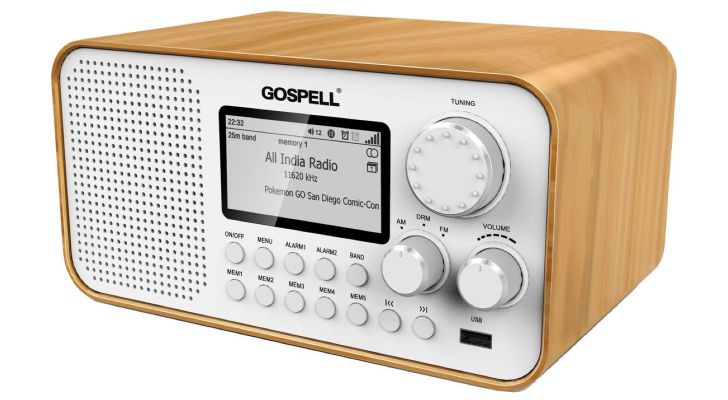DRM show off new receivers, and announce Hungary transmissions
By James Cridland for media.info
Posted 11 September 2016, 3.37am edt

The Digital Radio Mondiale Consortium have been busy at Amsterdam's IBC, co-ordinating a raft of announcements about their broadcasting technology.
The DRM standard comprises two configurations: one intended for broadcasts on short, medium and long wave, DRM30, and one for use on FM and DAB frequencies, called DRM+. Both allow in-band-on-channel transmission or digital-only broadcasting.
It was announced by transmitter company Nautel that Antenna Hungaria, the national network operator in Hungary, have recently placed an order for a 2 megawatt DRM MW transmitter. All India Radio has ordered another six DRM capable transmitters to supplement the existing thirty-five DRM transmitters in the country.
DRM receivers were also on display. Gospell Digital Technology, a Chinese company based in Shenzen, presented the GR-216. An attractive-looking wooden-boxed receiver, it receives DRM30, AM and FM stereo.
The other receiver, is from PantronX, a company based in Panama. The PantronX Titus II is an Android tablet with RF in a box - an interesting device which is apparently being manufactured at a price point of around US$100. The receiver is capable of reception of everything from 100kHz up to 2GHz, and includes a ferrite rod antenna. The website appears to be clear that it contains DRM30 reception, though doesn't mention DRM by name; DRM's press release claims it deals with DRM+, and presumably it is also capable of receiving and decoding DAB. The interface, at least currently, looks - charitably - enthusiast-friendly; but since it runs open-source software, anything's possible.
Meanwhile, partners were also running competitions to win the Avion AV-DR-1401, a receiver in production and available via Amazon India for US$216.
DRM is an impressive technology, and it's good to see new hardware being available for it. DRM30 is undeniably excellent at covering large areas with quality audio. However, AM transmissions continue to cease across Europe and transmitter sites are being decommissioned, weakening DRM's potential in these countries. It's now a race against time for DRM to gain acceptance as a consumer product while there is still adequate AM transmitter infrastructure.